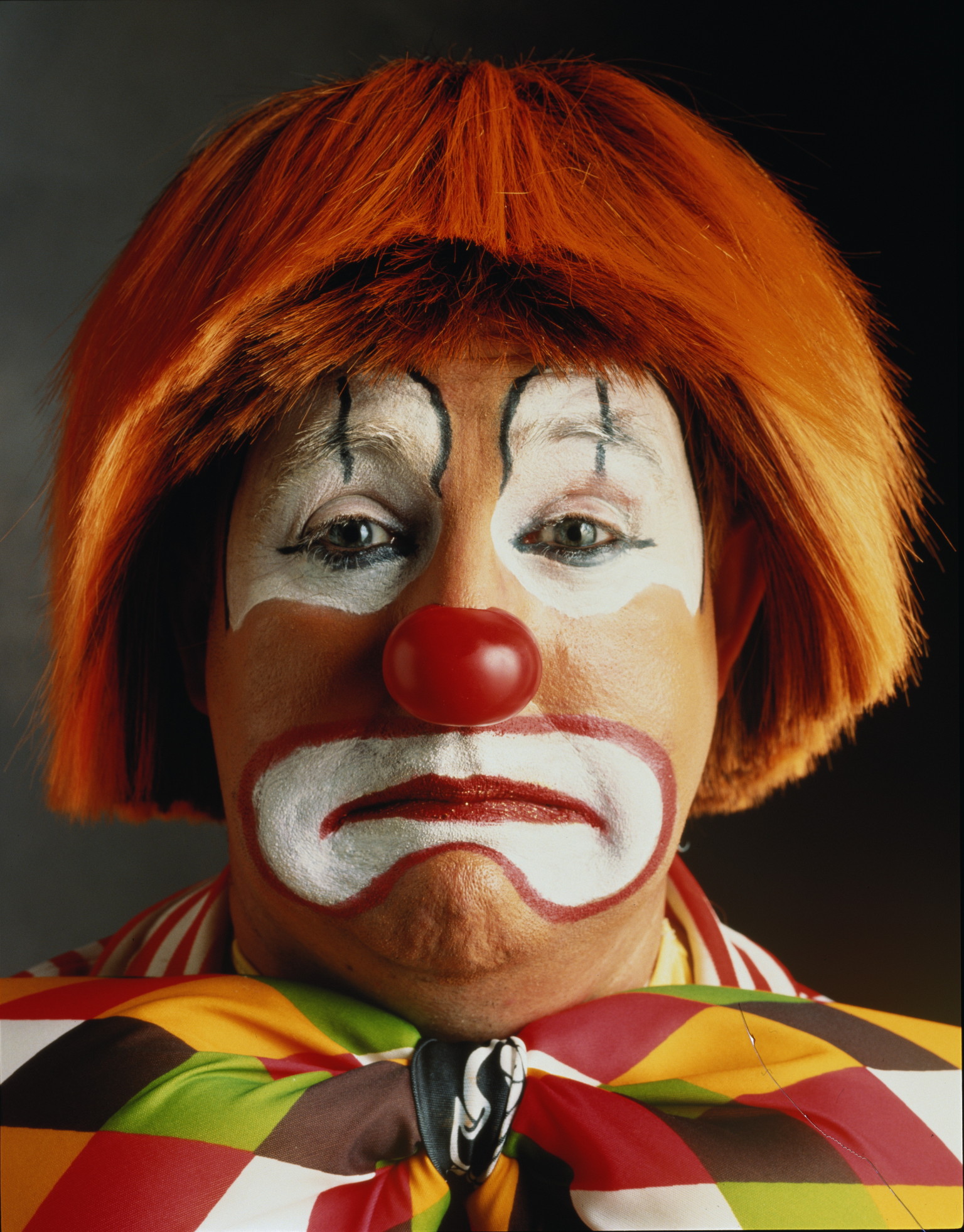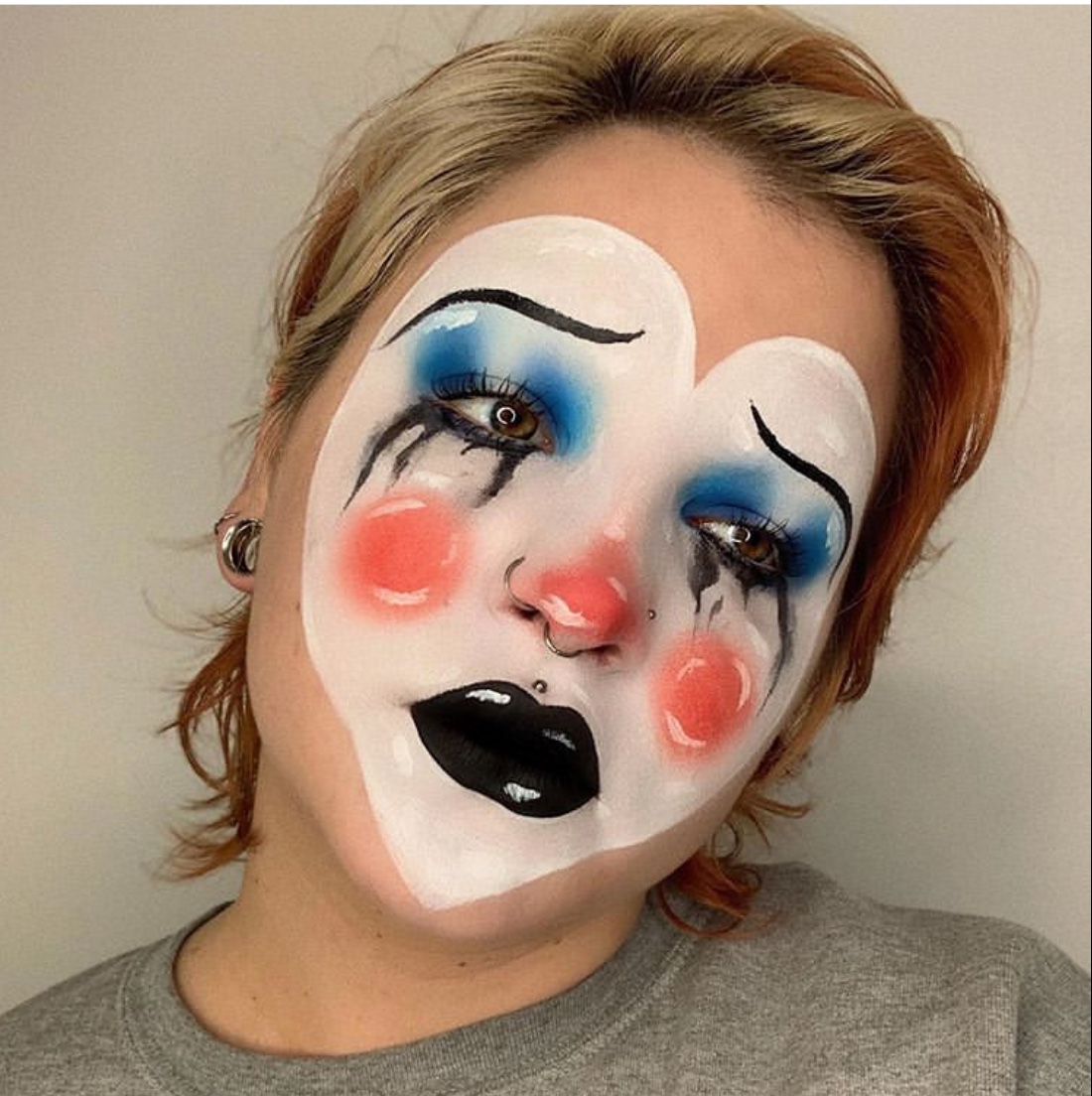Sad clown makeup has captured the fascination of many, often evoking feelings of melancholy juxtaposed with whimsy. This unique style transcends mere performance art, offering a profound commentary on the duality of human emotions. Whether used in theatrical productions, Halloween costumes, or personal expression, sad clown makeup invites individuals to explore the depths of sadness while wrapped in the playful guise of a clown. The artistry involved in creating this look not only showcases talent but also serves as a mirror reflecting inner turmoil and the complex nature of joy and sorrow.
Throughout history, clowns have been emblematic figures in both entertainment and art, often representing the spectrum of human emotion. The sad clown, in particular, stands out as a poignant reminder of the struggles that lie beneath the surface. This powerful imagery allows for a rich exploration of themes such as loneliness, despair, and the search for happiness. In a world where laughter often masks pain, sad clown makeup provides a unique outlet for expression, allowing individuals to confront their emotions head-on.
In this article, we will delve into the captivating world of sad clown makeup, exploring its origins, techniques, and cultural significance. From the intricate designs on the face to the symbolism behind each color, we will uncover the layers of meaning that this art form holds. Join us as we navigate through the enigmatic realm of sad clown makeup, where sorrow meets creativity, and emotions are transformed into art.
What is the History of Sad Clown Makeup?
The origins of sad clown makeup can be traced back to the commedia dell'arte in Italy during the 16th century. These early performers used exaggerated facial expressions and costumes to convey various human traits, including sadness. Over the years, this tradition evolved, leading to the creation of iconic characters such as Pierrot, a melancholic figure often depicted in white makeup with a teardrop painted on his cheek.
In the 20th century, sad clowns gained prominence in popular culture, largely due to the influence of circus performances and vaudeville acts. The juxtaposition of laughter and sorrow became a recurring theme, and this duality was beautifully captured through makeup. As society grappled with complex emotions, the sad clown emerged as a symbol of the human condition, representing the idea that beneath the façade of happiness often lies deep-seated pain.
How to Create the Perfect Sad Clown Makeup Look?
Creating the perfect sad clown makeup look requires a blend of creativity, skill, and an understanding of the emotions you wish to convey. Here are some essential tips to help you achieve this striking appearance:
- Choose a Base Color: Start with a white face paint as your base. This sets the stage for the rest of your design.
- Add Depth with Shadows: Use black or gray face paint to create shadows around the eyes and mouth, emphasizing a somber expression.
- Incorporate Color: Use muted colors like blues and purples to represent sadness. You can add teardrops or smudges for a more dramatic effect.
- Finishing Touches: Add details such as exaggerated eyebrows and a frown to complete the look. Consider using fake tears or glitter for added flair.
What Materials Do You Need for Sad Clown Makeup?
To create a stunning sad clown makeup look, you will require the following materials:
- White face paint
- Black eyeliner or face paint
- Colored face paints (blues, purples, pinks)
- Makeup brushes and sponges
- Setting powder or spray
- Optional: Glitter or fake tears for added effects
Who are Some Famous Sad Clowns in Pop Culture?
Throughout the years, various characters and performers have embodied the essence of the sad clown, leaving a lasting impact on pop culture. Some notable examples include:
- Emmett Kelly: Known for his character "Weary Willie," Kelly was a circus performer whose sad clown persona resonated with audiences worldwide.
- Bozo the Clown: While primarily a comedic figure, Bozo often exhibited moments of sorrow, reflecting the complexities of the clown archetype.
- Pierrot: This classic character from French pantomime represents the archetype of the sad clown, often portrayed in literature and art.
Why is Sad Clown Makeup Significant?
Sad clown makeup holds significant cultural and emotional weight, as it embodies the juxtaposition of joy and sorrow. It serves as a reminder that happiness can often be a mask for deeper feelings of despair. This art form resonates with individuals on a personal level, allowing them to express their emotions in a visually striking manner.
Moreover, sad clown makeup challenges societal norms surrounding the expression of feelings. In a world that often encourages the suppression of sadness, this form of makeup embraces vulnerability and authenticity. It invites individuals to confront their emotions and find beauty in their struggles, ultimately fostering a sense of connection and understanding among those who relate to the sad clown's plight.
Can Sad Clown Makeup Be Used for Performance Art?
Absolutely! Sad clown makeup is a powerful tool in the realm of performance art. Many actors, dancers, and performers utilize this style to convey complex emotions and tell compelling stories. The visual impact of sad clown makeup can enhance a performance, drawing audiences into the emotional landscape of the character.
In theatrical productions, sad clowns often serve as a poignant reminder of the human experience, bridging the gap between humor and tragedy. This duality allows performers to explore themes of vulnerability, resilience, and the pursuit of happiness amidst adversity. By embracing sad clown makeup, artists can create an unforgettable and thought-provoking experience for their audience.
What are the Psychological Implications of Sad Clown Makeup?
The psychological implications of sad clown makeup are profound and multifaceted. On one hand, it can serve as a cathartic outlet for individuals grappling with their emotions, allowing them to externalize their internal struggles. On the other hand, the concept of the sad clown may also reflect societal expectations surrounding emotional expression.
In essence, the sad clown makeup embodies the complexities of human existence, prompting individuals to confront their feelings and seek solace in shared experiences. This art form encourages a dialogue about mental health and emotional well-being, reminding us that it is okay to embrace our sadness and seek connection with others who share similar struggles.
How Can You Incorporate Sad Clown Makeup into Your Life?
Incorporating sad clown makeup into your life can be a creative and therapeutic endeavor. Here are some ways to embrace this art form:
- Participate in Theatrical Productions: Join local theater groups or workshops that explore the themes of sadness and joy through performance art.
- Host a Makeup Party: Gather friends for a creative night of experimenting with sad clown makeup, sharing stories and experiences in the process.
- Create Art: Use your sad clown makeup as inspiration for paintings, drawings, or photography that convey the emotions you wish to express.
Conclusion: The Enduring Allure of Sad Clown Makeup
Sad clown makeup is more than just a cosmetic choice; it is a powerful form of expression that transcends the boundaries of art and emotion. By embracing this unique style, individuals can explore the depths of their feelings while connecting with others who share similar experiences. As we navigate the complexities of life, the sad clown serves as a poignant reminder that it is okay to embrace our vulnerabilities and find beauty in our struggles.
Through its rich history, emotional significance, and artistic potential, sad clown makeup continues to captivate audiences and inspire performers alike. As we celebrate this art form, let us remember that the spectrum of human emotions is vast, and within the realm of sadness lies the potential for connection, creativity, and ultimately, healing.



ncG1vNJzZmivp6x7s7HBnqOrmZ6YtbjFzmeaqKVfnru0tcahq6xtX6iupXnCpaawpl2irqyx1KlloaydoQ%3D%3D